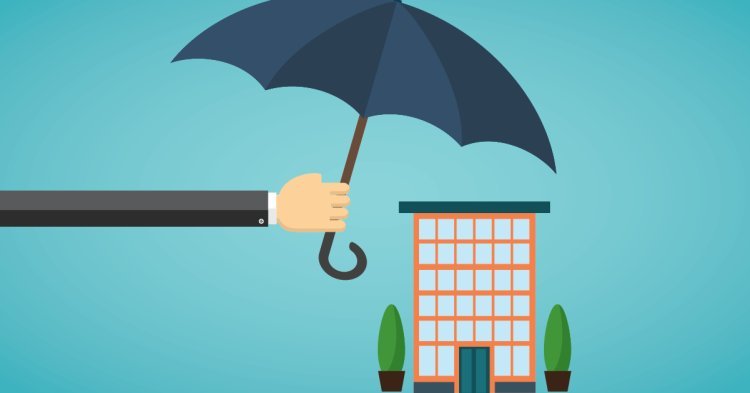How Natural Disasters Impact Property Insurance: What You Need to Know
Natural disasters can strike at any time, leaving homeowners, renters, and property investors scrambling to recover. While property insurance is designed to protect your home and belongings, it's important to understand how different natural disasters can affect your coverage.

1. Understanding Property Insurance Coverage
Property insurance typically covers damage to your home and possessions caused by certain events, such as fire, theft, and vandalism. However, natural disasters may not always be fully covered under a standard policy. It’s essential to understand what’s included in your coverage and what isn’t.
Common Types of Coverage:
- Dwelling Coverage: Protects the physical structure of your home.
- Personal Property Coverage: Covers belongings inside the home, such as furniture, electronics, and clothing.
- Liability Coverage: Protects against legal claims if someone is injured on your property.
2. Does Property Insurance Cover Natural Disasters?
While property insurance policies offer valuable protection, many natural disasters are excluded or require separate policies. Here’s a breakdown of how various natural disasters can affect your property insurance:
a. Flooding
Flood damage is generally not covered by standard property insurance policies. Homeowners in flood-prone areas are encouraged to purchase flood insurance, which is typically offered by the National Flood Insurance Program (NFIP) or private insurers. It’s crucial to understand that even minor flooding can cause major damage to your home and belongings.
b. Earthquakes
Like flooding, earthquake damage is typically excluded from standard property insurance policies. If you live in an area prone to earthquakes, you’ll need to purchase additional earthquake insurance to protect against structural damage and the destruction of personal property. These policies usually have specific terms and conditions, such as deductibles, that you should review carefully.
c. Hurricanes, Tornadoes, and Wildfires
Coverage for hurricanes, tornadoes, and wildfires can vary depending on your location and the insurer. Wind damage is usually covered, but flooding (often a result of hurricanes or storms) might not be. Wildfire damage is often covered, but in some areas, high-risk regions might have limited coverage or higher premiums.
- Hurricanes and Tornadoes: Wind damage is typically covered, but you may need separate flood or storm surge coverage if your area is at risk.
- Wildfires: In wildfire-prone areas, coverage is usually included for damage caused by fires, but check if there are any special exclusions or limits on high-risk properties.
d. Other Natural Disasters
Some natural disasters, such as hailstorms, landslides, and volcanic eruptions, may be covered depending on your insurance policy and geographical location. Always check your policy to ensure you're adequately covered.
3. How to Protect Your Property From Natural Disasters
To reduce the risk of property damage from natural disasters and ensure your insurance covers you, consider the following tips:
a. Review and Update Your Policy Regularly
Ensure that your insurance policy covers the risks relevant to your location. If you live in a flood or earthquake zone, add the necessary coverage. Update your policy as your home’s value increases or if you make significant upgrades or renovations.
b. Document Your Property
In the event of a disaster, having proper documentation can help you file a claim more efficiently. Take photos or videos of your home and belongings, and store them in a safe location (e.g., cloud storage). This will provide evidence of your property’s condition before the disaster.
c. Consider a Separate Policy for High-Risk Events
For areas prone to natural disasters like flooding or earthquakes, additional coverage can be purchased to protect your home. Research and talk to your insurance provider about specialized policies for these types of risks.
d. Improve Your Home’s Resilience
Make your property more resilient to natural disasters by:
- Reinforcing the roof and windows
- Installing sump pumps for flood protection
- Creating defensible space to protect against wildfires
- Securing heavy furniture and appliances
4. The Financial Impact of Natural Disasters
Natural disasters can be financially devastating. Even if you have property insurance, the costs of repairs, temporary living expenses, and replacing damaged property can add up quickly. To ensure you’re prepared:
- Understand your deductible: The deductible is the amount you must pay out of pocket before your insurance coverage kicks in. A higher deductible may lower premiums but leave you with a bigger financial burden in the event of a disaster.
- Assess your coverage limits: Some policies may have caps on how much they will pay for specific types of damage, such as flood or wildfire damage. Review these limits to ensure they align with the potential cost of rebuilding or replacing your property.
5. Conclusion: Be Prepared and Stay Protected
Natural disasters are unpredictable, but your property insurance doesn’t have to be. Take the time to understand your coverage, review your policy, and make any necessary updates. By ensuring you have the right protection in place, you can give yourself peace of mind knowing that your property is covered in the event of a disaster.
What's Your Reaction?
















